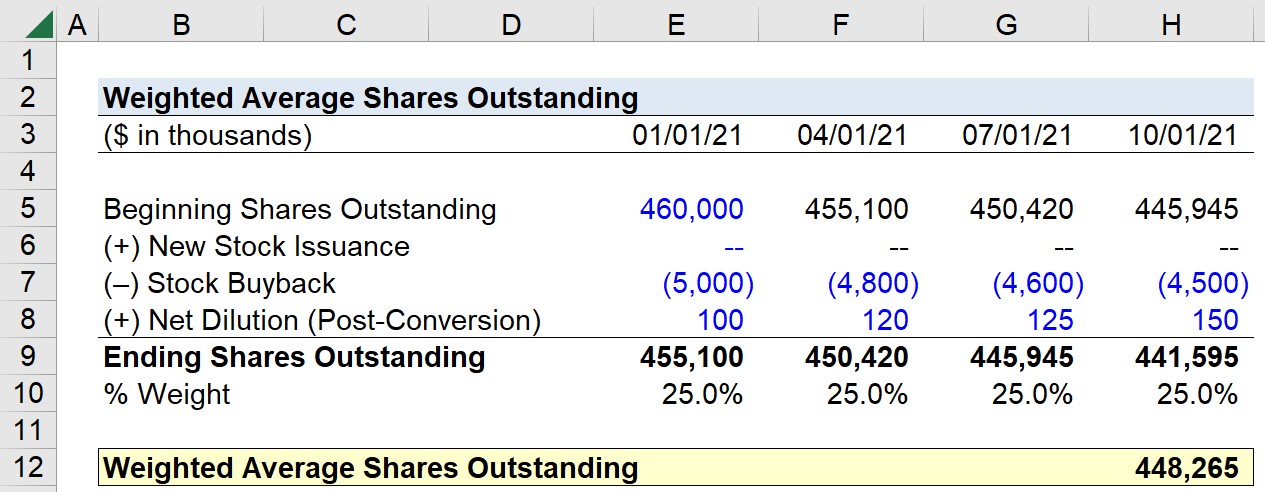

Finance
What Is Form 4 In Stocks
Published: January 17, 2024
Learn about Form 4 in stocks and its significance in the world of finance. Explore how this form impacts investors and stock transactions.
(Many of the links in this article redirect to a specific reviewed product. Your purchase of these products through affiliate links helps to generate commission for LiveWell, at no extra cost. Learn more)
Table of Contents
Introduction
When it comes to investing in stocks, understanding the regulatory requirements and reporting obligations is crucial for both individual and institutional investors. One important document that investors need to be familiar with is Form 4. This form plays a significant role in providing transparency and accountability in the stock market.
Form 4 is a document filed with the U.S. Securities and Exchange Commission (SEC) by company insiders, including directors, officers, and beneficial owners, to report their transactions involving the company’s securities. These transactions could include buying or selling shares, exercising stock options, or receiving stock grants.
By reviewing Form 4 filings, investors can gain valuable insights into the buying and selling activities of company insiders. This information can be quite telling, as insiders often have access to non-public information and their transactions can indicate their level of confidence in the company’s prospects.
In this article, we will delve into the details of Form 4, including its purpose, requirements for filing, and the information it contains. We will also discuss why Form 4 is important for investors and how they can utilize this information to make informed investment decisions.
Definition of Form 4
Form 4 is a required filing under Section 16(a) of the Securities Exchange Act of 1934. It is used to report transactions in the securities of a publicly-traded company by corporate insiders. Corporate insiders include directors, officers, and beneficial owners who have a stake of 10% or more in the company’s shares.
The purpose of Form 4 is to provide transparency in the stock market by disclosing the buying and selling activities of insiders. This allows investors to understand the actions of these individuals and potentially gauge their confidence in the company’s future performance.
The SEC mandates that Form 4 must be filed within two business days of the transaction date. The form requires detailed information about the insider, such as their name, address, and relationship with the company. It also requires specific details about the transaction, including the type of transaction (buy, sell, or other), the number of shares involved, and the price at which the transaction occurred.
It’s important to note that not all transactions by insiders need to be reported on Form 4. Certain transactions, such as gifts and inheritances, are exempt from reporting requirements. However, the majority of transactions, including those involving stock options, restricted stock units, and direct purchases or sales of shares, must be reported.
Once filed with the SEC, Form 4 becomes publicly available, allowing investors and other market participants to access and analyze the information. This promotes transparency and helps to maintain the integrity of the stock market.
Purpose of Form 4
The primary purpose of Form 4 is to provide transparency and accountability in the stock market by requiring corporate insiders to report their transactions involving company securities. By doing so, investors can gain insights into the buying and selling activities of insiders, which can be valuable information for making investment decisions.
One of the main intentions behind Form 4 is to prevent insider trading and maintain fairness in the market. Insider trading refers to the buying or selling of securities based on material non-public information. By requiring insiders to disclose their transactions, Form 4 helps to ensure that investors have equal access to information and are not disadvantaged by insiders who may possess privileged knowledge.
Form 4 also serves to enhance transparency and trust in the stock market. By making insider transactions publicly available, the form allows investors to monitor the actions of key individuals within a company. This can provide valuable insights into insider sentiment and confidence in the company’s future prospects. Investors may interpret significant insider buying as a positive signal, indicating that insiders believe the stock is undervalued and has potential for growth. Similarly, notable insider selling may indicate caution or lack of confidence in the company’s outlook.
Furthermore, Form 4 can help detect potential conflicts of interest. Insiders who engage in transactions that may conflict with their fiduciary duties to the company must disclose these activities. This scrutiny helps to ensure that insiders are acting in the best interests of shareholders and not benefiting personally at the expense of the company.
Overall, the purpose of Form 4 is to promote transparency, prevent insider trading, and allow investors to evaluate insider actions. It provides a mechanism for monitoring and analyzing the buying and selling activities of corporate insiders, enabling investors to make more informed decisions based on this information.
Requirements for Filing Form 4
When it comes to filing Form 4, there are certain requirements that insiders must fulfill to ensure compliance with SEC regulations. These requirements aim to provide accurate and timely information regarding the transactions made by corporate insiders.
1. Timing: Form 4 must be filed with the Securities and Exchange Commission (SEC) within two business days of the date of the transaction. This ensures that the information is reported promptly and allows investors to access current and relevant data.
2. Insider Identification: The form requires detailed identification information about the insider, including their name, address, and relationship with the company. This information allows investors to determine who is involved in the transaction and their role within the organization.
3. Transaction Details: The form requires insiders to provide specific details about the transaction, including the type of transaction (buy, sell, or other), the number of shares involved, and the price at which the transaction occurred. These details help investors understand the magnitude and nature of the insider’s transaction.
4. Reporting Changes in Ownership: In addition to reporting the initial acquisition or disposition of company securities, insiders are required to file subsequent amendments to Form 4 to report any changes in their ownership position. This includes any subsequent purchases, sales, conversions, exercises of options, or other transactions that affect their ownership stake in the company.
5. Exemptions: While most transactions by insiders need to be reported on Form 4, there are a few exemptions. For example, gifts and inheritances of company securities may be exempt from reporting, as they are not considered transactions based on the insiders’ decisions. However, it’s important to note that any subsequent selling of these gifted or inherited shares would still require reporting.
6. Filing Electronically: Form 4 must be filed electronically through the SEC’s Electronic Data Gathering, Analysis, and Retrieval (EDGAR) system. This ensures efficiency, accuracy, and accessibility of the information for investors and market participants.
By adhering to these requirements, insiders contribute to the transparency and integrity of the stock market, providing investors with the information they need to make informed decisions based on insider transactions.
Information Included in Form 4
Form 4 requires the disclosure of specific information regarding the transactions made by corporate insiders. This information provides investors with valuable insights into the buying and selling activities of insiders, enabling them to make informed investment decisions. Here are the key details included in Form 4:
1. Insider Identification: The form includes detailed identification information about the insider, such as their name, address, and relationship with the company. This helps investors recognize the individuals involved in the transaction and understand their position within the organization.
2. Company Information: Form 4 also includes information about the company, including its name and stock symbol. This ensures that the disclosed transactions are properly associated with the correct company.
3. Transaction Details: The form requires insiders to provide specific information about the transaction, such as the type of transaction (buy, sell, or other), the number of shares involved, and the price at which the transaction occurred. This information allows investors to assess the magnitude and nature of the insider’s transaction.
4. Derivative Securities: If the transaction involves derivative securities, such as stock options or restricted stock units, Form 4 requires additional details. This may include the exercise price, expiration date, and any restrictions on the securities.
5. Reporting Changes in Ownership: In addition to reporting the initial acquisition or disposition of company securities, insiders must also report subsequent changes in their ownership position. This includes reporting any subsequent purchases, sales, conversions, or exercises of options that impact their ownership stake in the company.
6. Transaction Codes: Form 4 utilizes specific transaction codes that categorize the nature of the reported transactions. These codes help investors quickly identify whether the insider bought or sold shares, exercised options, or received stock grants.
7. Dates: The form requires the inclusion of transaction dates, which indicate when the insider acquired or disposed of the securities. This helps investors analyze the timing of the transactions and assess their potential relevance.
8. Signature: Finally, Form 4 must be signed by the disclosing insider, confirming the information’s accuracy and compliance with SEC regulations.
By providing these comprehensive details, Form 4 enables investors to closely monitor the buying and selling activities of corporate insiders. This information can be invaluable in assessing the sentiment and confidence of insiders, helping investors make more informed decisions in the stock market.
Importance of Form 4 for Investors
Form 4 plays a vital role in providing valuable information to investors. By monitoring the buying and selling activities of corporate insiders, investors can gain insights into the sentiment, confidence, and potential future performance of a company. Here are some key reasons why Form 4 is important for investors:
1. Insider Trading Signals: Form 4 allows investors to track the transactions made by directors, officers, and beneficial owners of a company. Significant insider buying can be interpreted as a positive signal, indicating that insiders believe the stock is undervalued or that the company has promising prospects. Conversely, notable insider selling may suggest caution or lack of confidence. By analyzing these transactions, investors can gain insights into insiders’ opinions on the company’s future performance.
2. Non-Public Insights: Insiders have access to non-public information about their companies. Their buying and selling activities can be indicative of their private knowledge or expectations of future developments. By reviewing Form 4 filings, investors can evaluate if insiders are acting on information that the general public may not yet be aware of, which can provide an edge in making investment decisions.
3. Investing Strategies: Many investors use Form 4 data as part of their investment strategies. For example, tracking insider buying can help identify potential investment opportunities. Insider transactions can reaffirm or challenge existing investment theses, providing investors with valuable information to reassess their positions.
4. Market Transparency: Form 4 filings promote transparency in the stock market by disclosing the transactions made by insiders. This transparency is essential for maintaining market integrity and ensuring that all investors have equal access to relevant information. By eliminating or reducing the information asymmetry between insiders and the general public, investors can make more informed decisions.
5. Regulatory Compliance: Form 4 is a regulatory requirement mandated by the Securities and Exchange Commission (SEC). By filing this form, insiders comply with the reporting obligations set forth by the SEC. Monitoring Form 4 filings can provide investors with confidence that a company and its insiders are adhering to regulatory guidelines, further reinforcing transparency and accountability.
6. Potential Insider Conflicts: Form 4 may shed light on potential conflicts of interest between insiders and the company. Insiders who engage in activities that conflict with their fiduciary duties must disclose these transactions. Identifying such situations through Form 4 filings can help investors assess the integrity and alignment of interests within the company.
In summary, Form 4 is a valuable tool for investors as it provides insights into the actions of corporate insiders, their confidence in the company, and potential indicators of future performance. By monitoring these filings, investors can make more informed investment decisions and stay up-to-date with the latest developments in the companies they are interested in.
Conclusion
Understanding the role and importance of Form 4 is crucial for investors who want to stay informed about the activities of corporate insiders. This regulatory filing provides transparency, accountability, and valuable insights into the buying and selling actions of company directors, officers, and beneficial owners.
Form 4 serves as a tool for market participants to evaluate insider sentiment and potential future performance of a company. By tracking insider transactions, investors can uncover signals of insider confidence or caution, helping them make more informed investment decisions.
Moreover, Form 4 filings contribute to the overall transparency and integrity of the stock market. They help prevent insider trading by ensuring that material information is disclosed to all investors in a timely manner. This promotes fairness and equal access to information, leveling the playing field for all market participants.
For investors, monitoring Form 4 filings can be a valuable strategy to gain non-public insights and potentially spot investment opportunities. It offers a means to analyze the actions of insiders and identify potential trends or patterns that may impact stock prices and market sentiment.
However, it’s important to note that while Form 4 provides valuable information, it should not be the sole basis for investment decisions. Investors should consider additional factors such as company fundamentals, market conditions, and other relevant disclosures before making any investment choices.
In conclusion, Form 4 is an essential document that empowers investors to stay informed about insider transactions. By understanding the purpose, requirements, and information included in Form 4, investors can leverage this data to gain insights, assess insider sentiment, and make more informed investment decisions in the dynamic world of the stock market.














